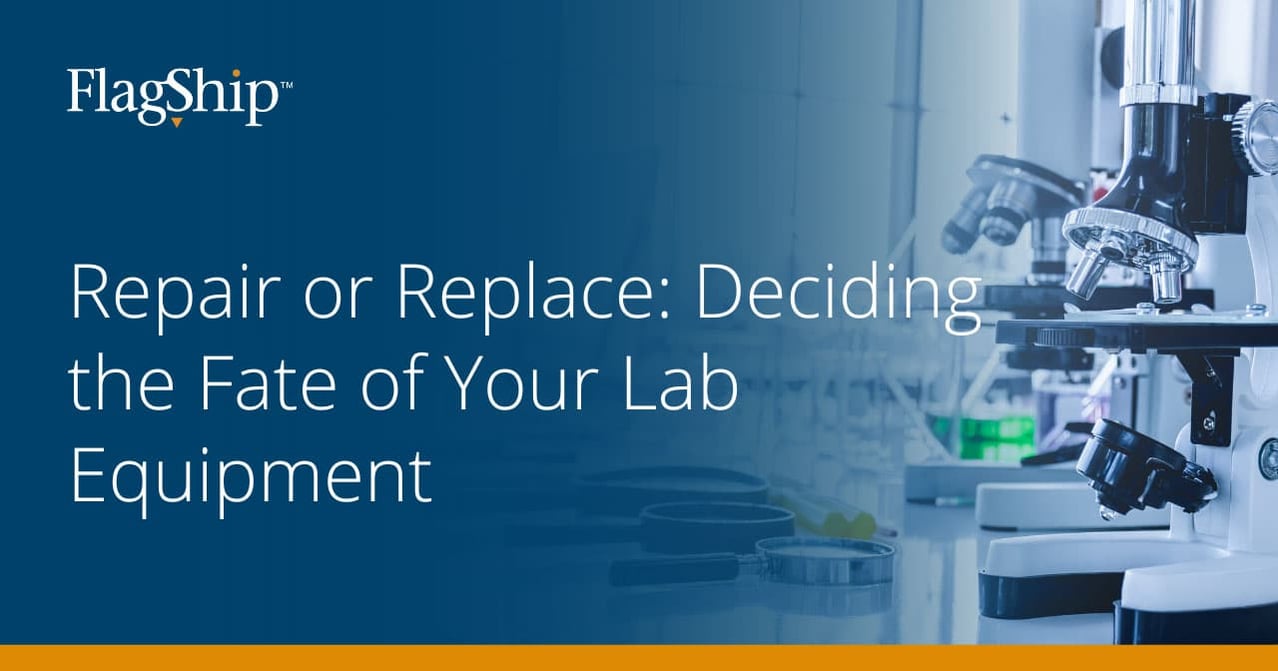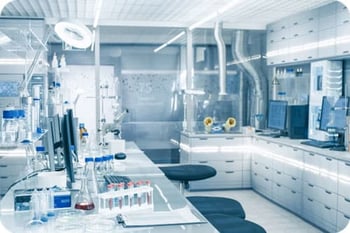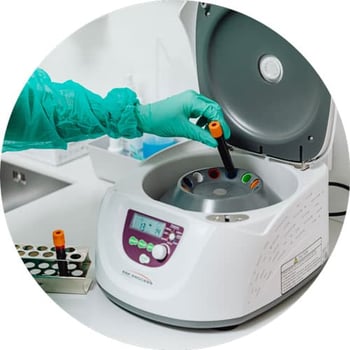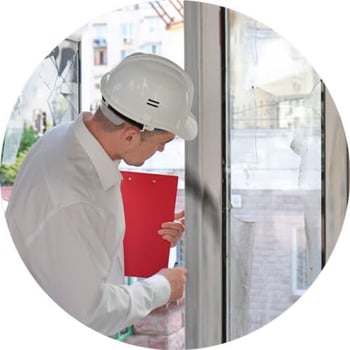
Maintaining laboratory equipment is essential for accurate, safe, and efficient scientific research. Regular maintenance prolongs the equipment’s lifespan and ensures consistent and reliable results. It also reduces the risk of unexpected breakdowns, preventing expensive downtime and data loss.
Lab managers often face a critical choice: repair aging equipment or invest in its replacement. This blog aims to guide you through this complex decision to ensure your lab continues operating at peak efficiency.
Assessing the Current State of Equipment
 Each piece of lab equipment has a defined lifespan, influenced by factors like usage frequency and maintenance history. Recognizing the signs that equipment is nearing the end of its useful life is crucial. You should take advantage of regular maintenance checks to look for these signs, which include:
Each piece of lab equipment has a defined lifespan, influenced by factors like usage frequency and maintenance history. Recognizing the signs that equipment is nearing the end of its useful life is crucial. You should take advantage of regular maintenance checks to look for these signs, which include:
- Increased calibration errors
- Frequent breakdowns
- Decline in accuracy
- Physical wear and tear
- Incompatibility with new procedures or requirements
You can also refer to the manufacturer’s guidelines, which typically include an estimated lifespan based on average usage conditions. The type of equipment and its usage intensity significantly affect its lifespan. For example, high-precision instruments usually have a shorter lifespan due to their delicate components, while more robust equipment like centrifuges tend to last longer.
Factors to Consider
Deciding whether to repair or replace lab equipment can be difficult for lab managers. The decision requires careful consideration of several factors, including cost implications and the impact on your operations. Understanding these factors will empower you to make an informed decision, balancing the immediate needs of your lab with your long-term operational goals.
Cost-Effectiveness
Analyzing the cost-effectiveness of repairing versus replacing requires you to compare the immediate and long-term financial implications. Begin by estimating the repair costs, including parts, labor, and the potential impact of downtime on lab operations. This should be weighed against the price of new equipment, factoring in benefits like improved efficiency, lower maintenance costs, and potential energy savings.
It's also important to consider the remaining lifespan of the current equipment after repairs. If the repair costs approach or exceed a significant percentage of the replacement cost (around 50% or more), investing in new equipment is probably more economical.
Impact on Productivity
When considering the impact of downtime on your lab operations, it’s important to take a comprehensive approach. Begin by estimating the duration of the repair process, considering the time needed for diagnosis, sourcing parts, and the actual repair work. During this time, assess how the absence of the equipment will affect ongoing experiments or processes. Will it cause significant delays in research or  testing timelines? Can these delays be mitigated by temporary alternatives or workflow adjustments?
testing timelines? Can these delays be mitigated by temporary alternatives or workflow adjustments?
Acknowledging and proactively addressing the potential for lost productivity and its financial implications is imperative. In some cases, the cumulative cost of downtime – including delays in research outcomes, potential data loss, and the indirect costs of operational disruption – may outweigh the cost of immediate replacement, especially for critical or heavily used equipment.
Availability of Parts and Services
When equipment parts are scarce or no longer in production, the cost and time to source them can escalate quickly, making repairs less feasible and more expensive. Similarly, if specialized service or technical expertise required for repair is limited or unavailable, this can lead to prolonged downtime and uncertainty in repair quality. In these cases, replacement might be a more reliable and cost-effective option. On the other hand, repairs may be more viable if parts are readily available and the equipment can be serviced efficiently by trusted technicians.
The Case for New Equipment
Investing in new equipment is a strategic choice that can lead to advanced research outcomes in the lab. Newer equipment often uses cutting-edge technology that results in increased precision, faster processing times, and more user-friendly interfaces. These improvements can drastically boost lab productivity and the quality of research outcomes. For example, newer models of analytical instruments may offer higher sensitivity and accuracy, enabling you to obtain more reliable data.
New equipment also adheres to stricter safety protocols and is designed with contemporary hazards in mind to ensure the well-being of lab personnel. This is particularly beneficial in environments where scientists handle hazardous materials or conduct high-risk experiments.
Making the Decision: Repair or Replace
When faced with the decision to repair or replace lab equipment, we recommend you take a structured approach. Here’s a step-by-step guide to help you make an informed choice:
- Assess the current condition and age of the equipment:
- Evaluate the overall condition.
- Check the age of the equipment against its expected lifespan.

- Analyze repair costs:
- Obtain a detailed estimate for the necessary repairs.
- Consider any additional costs, such as parts and labor.
- Compare with replacement costs:
- Research the cost of new, equivalent equipment.
- Consider any additional benefits of new equipment, like improved technology or efficiency.
- Evaluate operational impact:
- Determine how long the equipment will be out of service if repaired.
- Assess the impact of this downtime on your lab's operations.
- Check parts and service availability:
- Determine if parts are readily available and if there are accessible services for repairs.
- Consider the potential delays and costs if parts are scarce.
- Consider technological advances:
- Determine if newer equipment offers significant technological improvements.
- Consider whether these advancements can benefit your lab's operations or research quality.
- Review safety and compliance standards:
- Ensure the equipment meets current safety and regulatory standards.
- Consider whether new equipment would provide better compliance.
- Calculate long-term financial implications:
- Assess the long-term operational costs of both repairing and replacing.
- Include maintenance, energy efficiency, and potential downtime in your calculations.
- Make an environmentally conscious decision:
- Consider the environmental impact of repairing versus replacing.
- Factor in energy efficiency and disposal implications.
- Consult with experts or stakeholders:
- Seek advice from equipment manufacturers or professional technicians.
- Discuss the options with key stakeholders in your lab.
- Final decision:
- Weigh all the information and decide whether repairing or replacing is the most beneficial for your lab's needs and future operations.
Remember, this decision should align not just with the current operational needs but also with your lab's long-term goals.
Flagship Lab Services is a leading provider of laboratory equipment services, including calibration, validation, and repair. We can help you assess your equipment’s current condition and take the necessary steps to ensure your lab operates at peak performance.
With a commitment to quality and innovation, we offer a range of equipment solutions to support your research, development, and production needs.
For more information about our comprehensive lab support services, visit our lab services page.





Leave a Comment